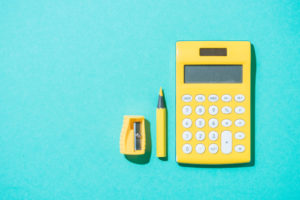All homeowners want to know what their home is worth, especially in a market as hot as Toronto’s. What goes into pricing a home? How do real estate agents and appraisers decide how much your house is worth?
If you’re a Seller: it’s important to know how your agent is appraising your home and how Buyers will decide what your house is worth.
If you’re a Buyer: it’s important to know how the Seller has arrived at their asking price. If you’re in a bidding war, it’s even more important to understand how market value is determined so that you can put your best foot forward, without paying too much.
While every REALTOR approaches a home’s valuation slightly differently, here’s the lowdown on how a Comparative Market Analysis (CMA) is performed and the factors that are taken into consideration.
 1. We Look at Historical Sales
1. We Look at Historical Sales
You know what they say…the best predictor of the future is the past. When pricing a home, real estate agents and appraisers will look at recent sales on your street and in your neighbourhood. While we used to look at sales 12 or 24 months back, with a real estate market that’s as active as Toronto’s we generally look at sales in the past 6 months.
The first step in deciding how much a home is worth is choosing nearby sold properties to compare the house to. While Sellers may be tempted to cherry-pick the comparable sales that support the highest price (and Buyers are tempted to cherry-pick the comparables that support the lowest price), the best comparables for a home are:
- Nearest in location (same street or nearby similar streets)
- Most recently sold (in the last weeks or months)
- Closest in size, style and condition
2. We Make Adjustments
The next step in determining a home’s value is making adjustments – adding and subtracting $$ to account for how the homes differ.
When it comes to Toronto houses, no two are alike. Finished basements and second bathrooms add value, corner lots and next-to-no storage detract; detached houses are worth more than semis; the house backing on to the railway tracks is worth less than the one backing onto a ravine; the south-facing condo on the 10th floor is worth more than the west-facing condo on the 5th floor. Experienced REALTORS and appraisers know what value people have historically put on certain features and can adjust your price accordingly.
When comparing houses and making adjustments for a CMA, there are many factors to consider, including:
- Type of house – detached houses tend to be the most valuable, followed by semi-detached and row houses
- Number or bedrooms – most houses in Toronto have three bedrooms – there’s a penalty for 2-bedroom houses and a bonus for 4+ bedroom houses
- Number of bathrooms – a two-bathroom home is more valuable than one bathroom home
- Location, including positive and negative influences – a home backing onto a cemetery won’t sell for as much as the neighbour across the street that backs onto a ravine
- Lot size – most of the price we pay for a house in Toronto is for the land – the houses we live in aren’t actually that expensive to build
- Square footage/size – Bigger is obviously more valuable
- Layout – Open layouts are more valuable these days than houses with a lot of closed-off rooms. The flow of the space is important too.
- Parking – What’s the penalty for having no parking? How much value does having a garage add? Or two spots vs one? Driveway vs laneway parking?
- Outdoor space – How do the outdoor spaces compare? It’s not just size that matters – style, design, prior maintenance, views, the neighbours – a lot of factors are considered.
- School district – Homes in superior school districts sell for more, and in Toronto, it’s entirely possible that homes on opposite sides of the streets are in different districts.
- Condition of the home – Has the house been well maintained? Are the floors and carpets in good condition? Are the unsexy things and mechanicals in good condition – electrical, plumbing, furnace, A/C, roof?
- Finishes – Comparing finishes is very subjective. How do the finishes compare in style, quality and recency of renovation? How would an average Buyer see the finishes? If a Seller spent $50,000 personalizing a home, how much will the average Buyer value those renos? It’s important not to put too much emphasis on personal taste but instead look at what an average Buyer would do; so while you might hate the kitchen in the house you’re thinking of buying and want to tear it out, if the average Buyer wouldn’t do that, the market value of the house wouldn’t be affected in the same way as an unusable bathroom that everybody would have to replace.
- Basement – What’s the difference in price for a house with a finished basement vs a house with an unfinished basement? How does that value change if the unfinished basement can be finished?
- Income potential – How much value does a basement apartment add? How much can it be rented for? How much more valuable is a legal apartment vs an illegal one?
- Inclusions and exclusions – if a home’s sale price includes appliances and another does not, an adjustment needs to be made
When looking at a past sale to help determine the price of a house, other factors influence the price too:
- The time of year it was sold – was it sold in a hot market or in the depths of the Christmas season?
- Whether the home was staged – staging can add tens of thousands of dollars to the sale price
- The quality of the photos – houses with bad flip-phone photos sell for less.
- How the house was marketed – if there are tons of mistakes in the MLS listing and no marketing efforts, that impacts value
- How easily the home could be seen – could potential Buyers easily book a showing or did they have to see it between 2-4 on Mondays and Wednesdays? o
- Motivation – Sometimes, a house sells unnaturally low than because the Sellers were desperate and just wanted out. There are some tell-tale signs that REALTORS use to see if a Seller was particularly motivated or unmotivated, so that can help explain some of the comparable sales too.
The best comparable home to yours will always be the one that is the most similar to yours in condition and size, is most closely located to yours and has sold the most recently.
 3. We Validate The Home’s Value
3. We Validate The Home’s Value
While a lot of agents skip this final validation step, we like to estimate a house’s value by performing a 3-way analysis and look for consistencies, trends and anomalies across the values.
When valuing a home at the BREL team, we:
- Perform statistical analysis on the house since it was purchased. We look at average prices when it was last purchased and average home prices today. If nothing was renovated since it was purchased, how much would it be worth today if it appreciated in value along with the rest of the market?
- Perform a neighbourhood analysis – On average, what do similar homes sell for in the neighbourhood? In the last year, what’s the average price of a 3-bedroom detached house in the neighbourhood irrespective of adjustments?
- Perform a competitive analysis – What’s happening in the neighbourhood right now? Are houses selling in multiple offers in 6 days or are they on the market for 30 days? How does the demand for the area compare with the supply?
4. MLS Data Only Takes Us So Far
It’s great to see photos and details about recent sales and current competition, but MLS data can be deceiving. Busy REALTORS and teams are familiar with what’s selling (and not selling) and why – because they see so many homes in real life.
Before we can suggest a price for your home, we also need to become familiar with the other homes that are for sale at the same time as yours – the active competition. We need to know what potential Buyers are going to see at the same time as they look at your home. Will they walk in and think it’s overpriced because the other two homes they’ve toured seem like better value? Will we outshine them because we’re sparkly clean and staged? When the BREL team lists a house or condo for sale, we physically go see the other properties we think your target Buyer will see – and recommend a price accordingly.
5. The Economic Reality
Supply and demand drive prices – when there are too many buyers chasing too few houses, prices go up. Prices are further affected by prevailing interest rates and the overall state of the economy. Just ask any homeowner who has lived through a recession – it doesn’t matter how great your granite countertops and hardwood floors look if 15% of the people in your city are unemployed and they owe the bank more than their house is worth.
6. The Demographic Wildcard
Who’s likely to buy your house? Will it appeal to a large number of Buyers or only a narrow target? How many Buyers who are out there right now want what you have to offer?
7. The Neighbourhood
Trendy neighbourhoods come and go…is your house in a HOT ‘hood? Is it growing or is it already mature? What new shops, services and transportation options are coming in? Has something negative happened (violence, poor school ratings) that will affect value?
8. What Doesn’t Affect The Value of Your House
There are also factors that are NOT relevant in determining market value:
- The price the Seller needs to get to break even
- The Buyer’s budget or particular personal tastes
- How much the Seller spent on renovations
- The asking price on the MLS listing
9. What’s Your Condo Worth?
When it comes to valuing condos, there’s a math and science to it too. We put together a complete guide to determining the price of a condo here.
10. The Value of Your Home is a Moving Target
What your house or condo is worth today is not necessarily what it is worth tomorrow, or next week or next year. As the factors that affect price change, so does how much your house is worth.
At the end of the day, your home is worth what someone is willing to pay for it. But a lot more goes into pricing a home and an experienced Toronto REALTOR can make sure that you sell for top dollar.
If you’re wondering what your house is worth, get in touch. We’ll happily give you a no-obligation evaluation of what your home is worth in today’s real estate market.
